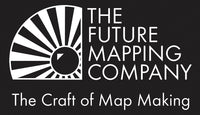Maps, Traps & Phantom Settlements
The World's maps are full of them but unless you cross-referenced every square on a given map, you would have no idea they were there!
WHAT IS A MAP TRAP?
Map traps, trap streets, phantom settlements, cartographer’s follies and copyright easter eggs are the cartographer’s watermark. They are created to ‘trap’ anyone copying their work - their inclusion in someone else’s map serves as proof that the map has been copied.
Traps, or fictitious entries, are not solely the preserve of maps – they appear in dictionaries and encyclopaedias, often called ‘Mountweasels’ in honour of the wonderfully named Lillian Virginia Mountweazel’s entry in the 1975 New Columbia Encyclopedia .
If you can imagine the work that goes into the creation of maps – mistakes and errors do happen but traps are far more subtle. It may be the addition of a fictitious street or town but more often it is a small change to the real topography – an extra wiggle in a road, showing a major road as a narrow way, nothing so bad as to make the reader lose their way, but enough to be able to prove something has been copied.
Below is the fictitious Lye Close found in The A to Z of Bristol.
Are they a secret among map makers?
Map Traps are routinely denied by mapping companies who wouldn’t want to be accused of creating fake maps, but a 20 million pound lawsuit was settled between the Ordnance Survey and the Automobile Association on precisely this, when the latter was accused of reproducing OS maps without a license. Although the OS maintain that they don’t use traps, they stressed, "There are some publishers who put deliberate mistakes in their maps. We don't do that - it would mislead our customers. For us, it's more about the style we use."
In the 1970’s the mysterious Mount Richard lay on an American map undiscovered for two years – it was believed to be the work of a draftsman Richard Ciacci, we love the idea of a map maker subtly alterering the world in their own image.
There are some fantastic creative responses to map traps. In the same way Garcia Marquez fictitious town of Macondo became the subject of a real life referendum; tourists visit Agloe because it featured in the bestseller, Paper Towns and residents of Argleton created a wealth of fictional local history. The Sky On Trap Street is an online project where users submit pictures of the sky they see above various map traps – turning fiction rather sweetly back into reality.
We asked our very own Marcus Kirby, founder of The Future Mapping Company what his opinion is:
“It doesn’t surprise me that map traps are used. Maps are a real labour of love to produce - the time spent collating data and editing is phenomenal and you need to protect that some how. We might use them at FMC but I'm afraid I can't tell you where otherwise they would be redundant! I just think map traps add another element to the many alluring qualities of a map.”





